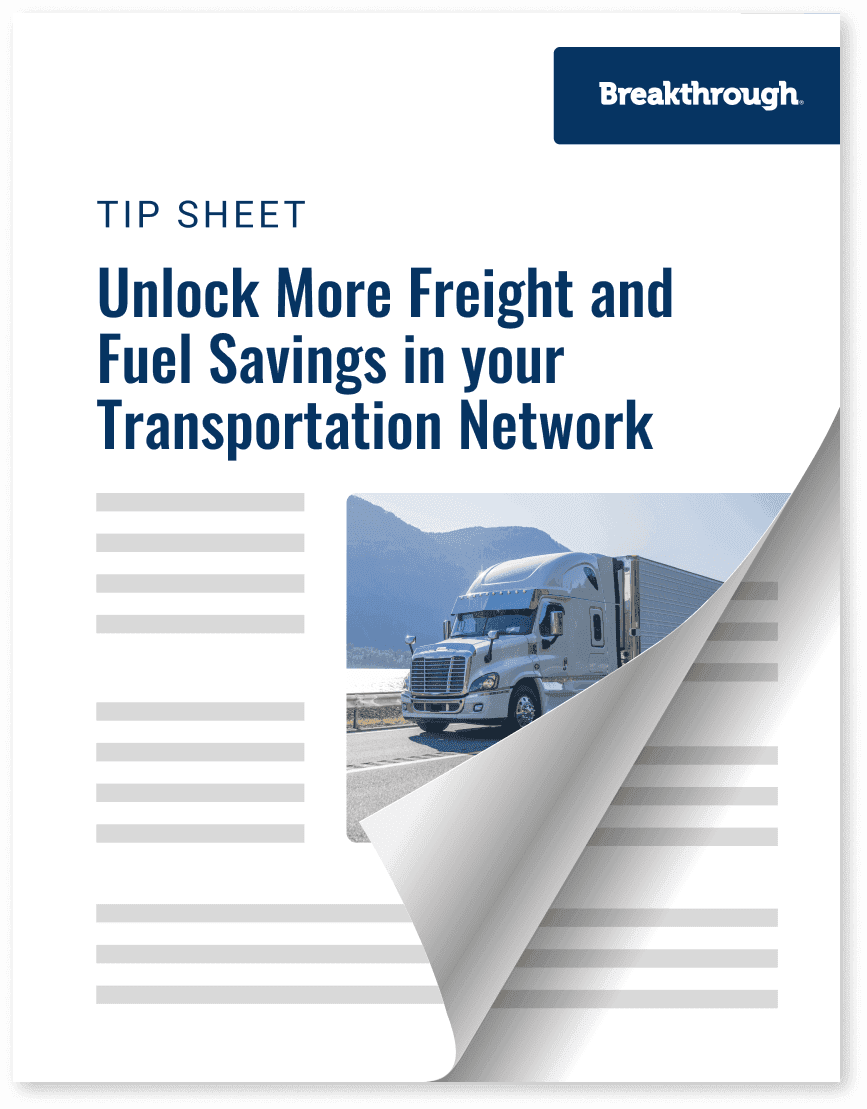Unlock More Freight & Fuel Savings in your Transportation Network

Trending
Top Posts
Market Events
Geopolitical Risks: Navigating Volatility in Energy Markets
4 min read
October 18, 2024
Sustainability and Tech
What Is Logistics Transportation Management? 4 Advantages for Success
4 min read
October 15, 2024
Sustainability and Tech
AI in Logistics: How Shippers Can Uncover Freight Efficiencies
4 min read
October 14, 2024

4 min read
May 27, 2022

Share:
The pandemic led to one of the tightest freight markets in recent history. Skyrocketing consumer demand created major freight capacity restrictions, with brokerage and spot market rates only softening in recent months. But shippers still found a way to move goods within tight carrier networks — even when the cost was high.
To explore how shippers balanced securing reliable capacity and managing exorbitant freight costs, we created the 2022 Truckload Capacity Report. This report summarizes the creative freight strategies that shippers used in 2021 to weather an extremely challenging supply chain, and analyzes data-driven trends in shippers’ sourcing solutions.
In this tight capacity market, brokerage and spot market sourcing became prevalent foundational freight strategies. Although appropriate in instances of unplanned or elevated freight volume, heavy reliance on these solutions created a disconnect between shippers and carriers. Without steady carrier relationships, shippers experienced hits to their bottom lines and unreliable carrier service.
In particular, our report documents two major trends as shippers navigated a highly restricted carrier network: (1) shippers’ reliance on brokerage solutions beyond best-use scenarios and (2) significant cost premiums in spot market- and brokerage-dependent freight strategies.
Brokerage and spot market solutions are best used in instances of unexpected or elevated freight volume. But many shippers use brokerage solutions beyond volume surge events — significantly hurting their freight network performance.
We analyzed 141,040 shipper and lane combinations in 2021 to understand the extent that shippers relied on brokerage solutions. Instead of returning to prior freight strategies after surge volumes subsided, we found that shippers largely continued using brokerage options even after they regained regular carrier capacity.
Once brokerage sourcing enters shippers’ networks, they have a lot of staying power — and a heavy reliance on brokerage and spot market solutions led to long-term cost challenges in 2021.
To explore the cost challenges of using brokerage and spot market solutions beyond best-use cases, we analyzed 1,253,440 shipments across 53 shippers that contained only intra-U.S. truckload movements in 2021.
Our analysis found that cost premiums of brokerage- and spot market-dependent freight strategies were exorbitant last year — confirming that these sourcing options are best used for surge events, not as primary sourcing strategies. Specifically, we analyzed rate data and quantified cost premiums associated with three sourcing approaches.
For a detailed dive into shipping trends and agile freight strategies in 2022, download the 2022 Truckload Capacity Report. This report combines data-driven trend analysis with transportation expertise to help you optimize your approach to carrier sourcing.
Breakthrough provides innovative transportation technology solutions and market insights to the world’s most reputable brands. With our cutting-edge Network Intelligence solution and FELIX platform, we create transportation strategies that improve transportation network efficiency, reduce cost, and establish stable networks.
Contact us to learn more about how we can help you execute a freight network strategy to meet your goals.

4 min read
October 18, 2024
Explore how geopolitical tensions and hurricane season are driving energy market volatility in 2024, significantly impacting oil prices and routing guides.
Read more
4 min read
October 15, 2024
Discover the benefits of using a logistics transportation management provider to streamline operations, enhance visibility, and meet sustainability targets.
Read more
4 min read
October 14, 2024
Explore how AI in logistics is advancing the supply chain through route optimization, market forecasts, and benchmarking, providing shippers innovative solutions.
Read more